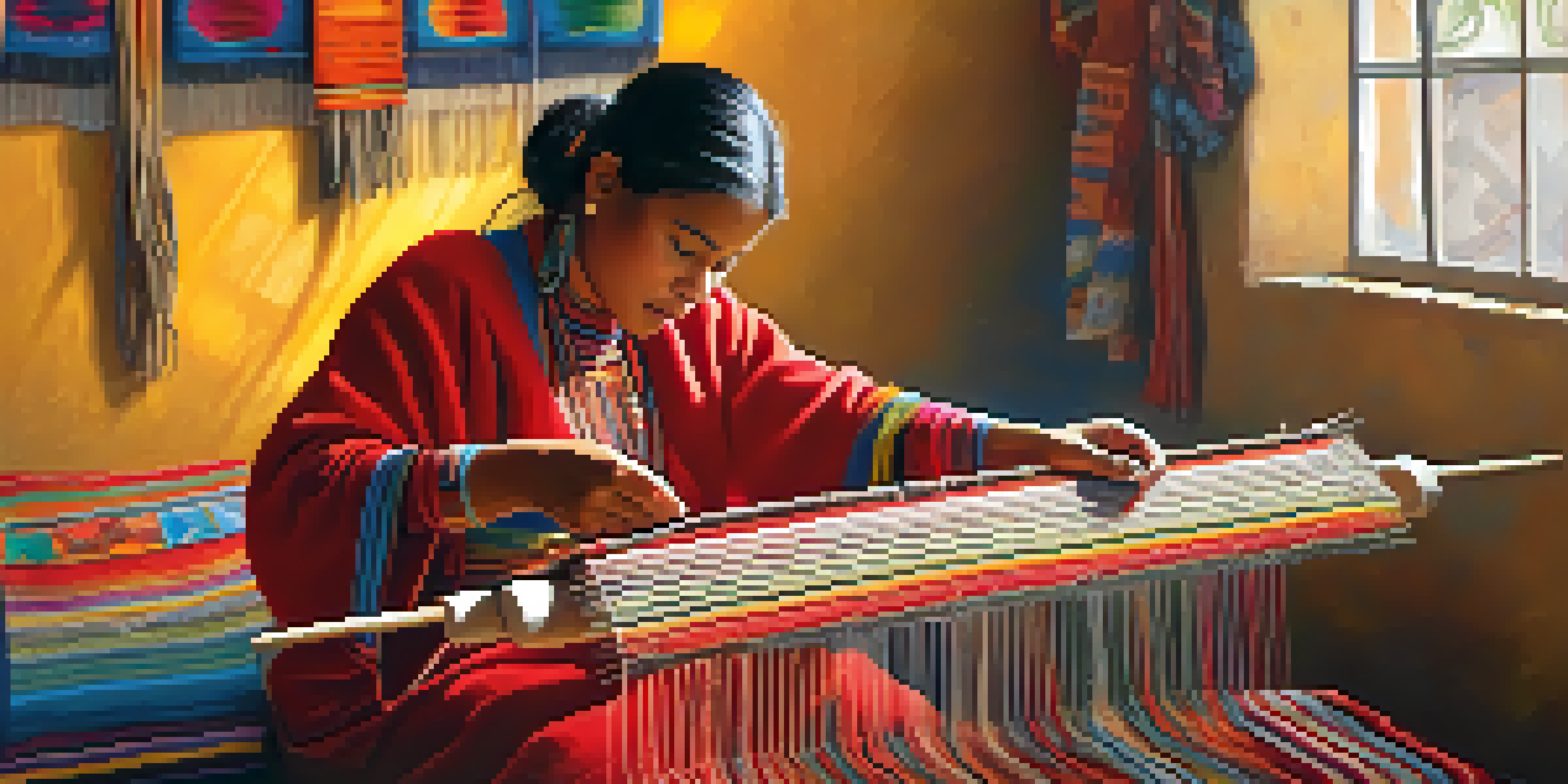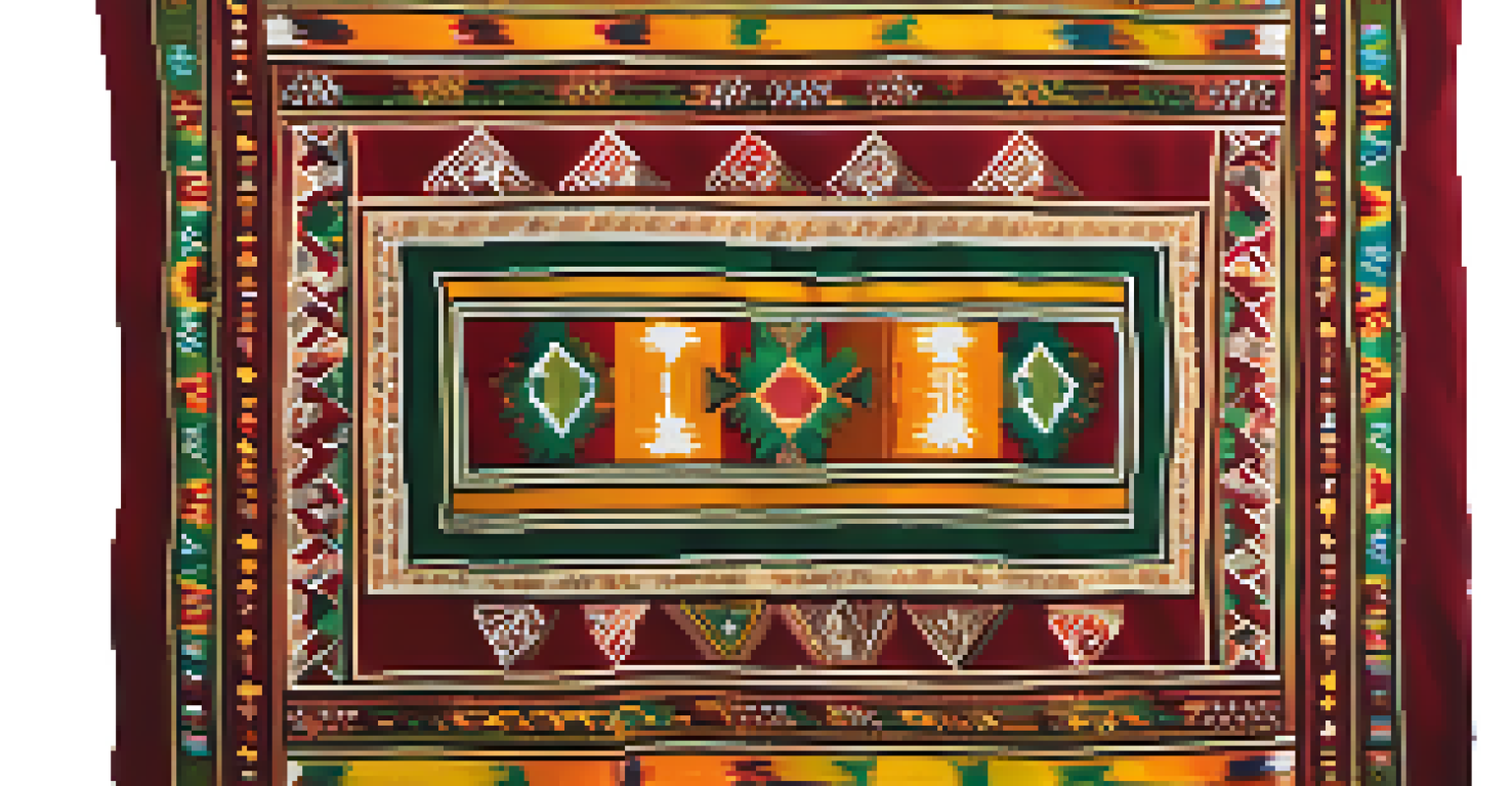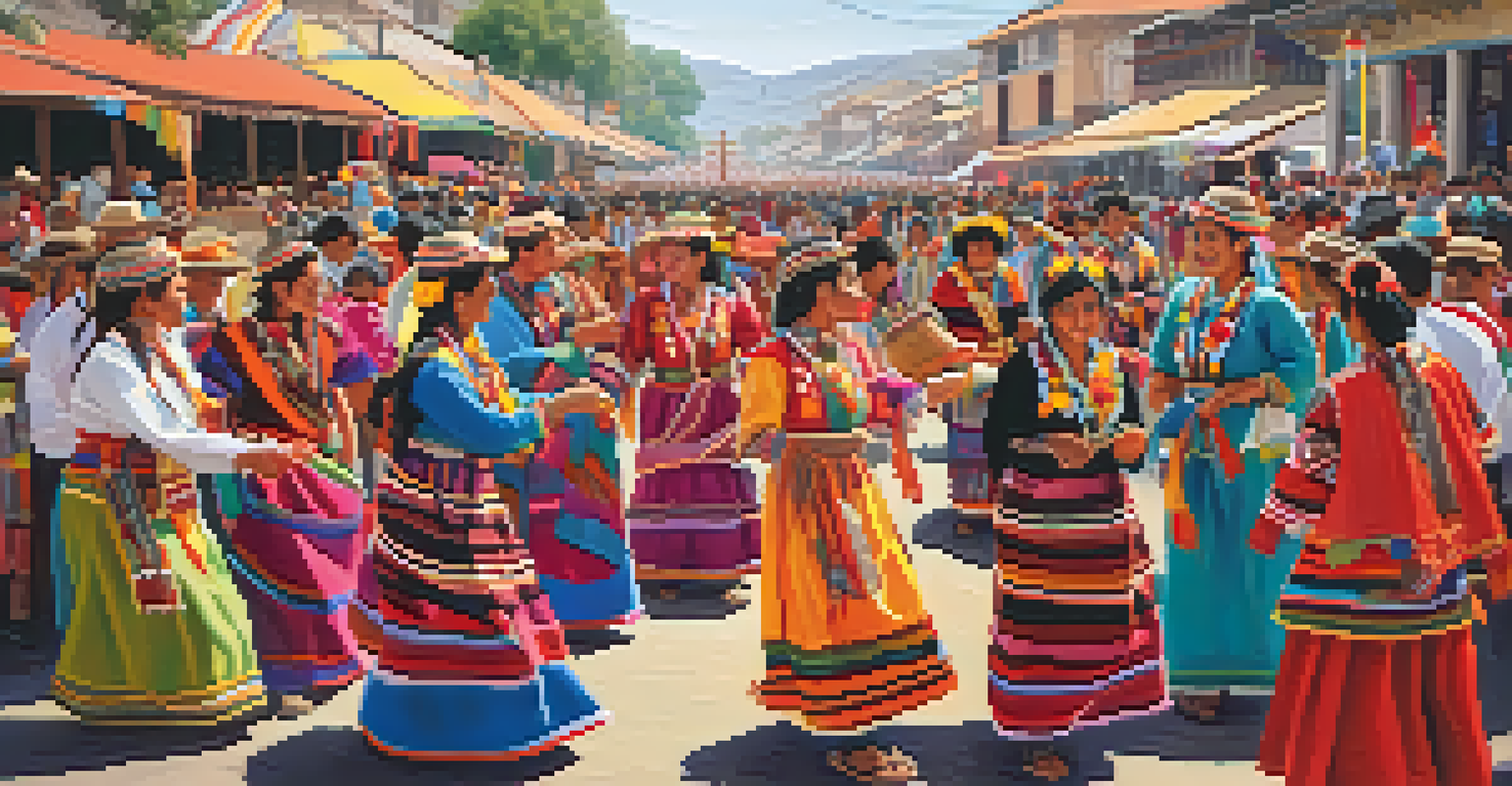The Role of Textiles in Peruvian Cultural Identity

Textiles as a Reflection of Peruvian History and Culture
Textiles in Peru are more than just fabric; they are a vibrant expression of the country's history and cultural heritage. Each piece tells the story of the diverse indigenous communities and their unique traditions. For instance, the intricate patterns and colors used often symbolize various aspects of life, from nature to spirituality, reflecting the deep connection between the people and their environment.
Textiles are not just functional items; they are a reflection of our culture, history, and identity.
The art of weaving has been passed down through generations, with techniques that date back thousands of years. This continuity not only preserves cultural practices but also strengthens community bonds. By wearing or displaying traditional textiles, individuals connect with their ancestors and reinforce their cultural identity.
Moreover, textiles serve as a tangible link to the past, allowing future generations to appreciate and learn about their heritage. As artisans create these pieces, they infuse contemporary themes into traditional designs, ensuring that the textiles remain relevant and resonate with younger audiences.
The Significance of Traditional Weaving Techniques
Traditional weaving techniques are at the heart of Peru's textile identity, with each region showcasing its distinct styles. For example, the Andean communities employ time-honored methods that utilize natural dyes and locally sourced materials. This commitment to authenticity not only enhances the quality of the textiles but also supports sustainable practices.

Artisans often use backstrap looms, a method that allows them to create textiles of varying complexity. This technique requires skill and patience, resulting in pieces that are not only beautiful but also imbued with the weaver's personal touch. Each textile becomes a unique work of art, reflecting the individuality of the artist.
Textiles Reflect Cultural Heritage
Peruvian textiles serve as vibrant expressions of the country's history, connecting communities to their ancestors through intricate patterns and colors.
Learning these weaving techniques is a rite of passage for many in these communities, preserving knowledge that might otherwise be lost. Workshops and community events encourage younger generations to engage with this craft, fostering a sense of pride and ownership over their cultural legacy.
Symbolism in Peruvian Textile Patterns and Colors
The patterns and colors used in Peruvian textiles are steeped in symbolism, often representing various cultural beliefs and the natural world. For instance, the vibrant reds and yellows might signify the sun, while blues and greens can represent water and earth. These choices are not arbitrary; they reflect the community's worldview and their relationship with nature.
In weaving, the fabric of our lives is stitched together, and each thread tells a story.
Different regions have their own specific motifs that tell stories about their environment and cultural practices. For example, the zigzag patterns often symbolize the mountains, which are sacred to many Andean cultures. By wearing these textiles, individuals carry a piece of their culture and its stories with them.
This deep-rooted symbolism adds layers of meaning to each textile, transforming them from mere clothing to powerful cultural artifacts. As people wear these textiles, they embody the stories and values of their ancestors, keeping their cultural identity alive.
The Impact of Globalization on Peruvian Textiles
Globalization has brought both opportunities and challenges to the world of Peruvian textiles. On one hand, access to international markets allows artisans to share their work with a broader audience, showcasing their heritage on a global stage. This can lead to increased income and visibility for traditional crafts.
However, the influx of mass-produced textiles can threaten traditional methods and designs. Many artisans struggle to compete with cheaper, machine-made alternatives that lack the authenticity and craftsmanship of handmade pieces. This raises concerns about the future of these traditional practices and the cultural identity they embody.
Women Empowered in Textile Craft
Women play a vital role in preserving and producing textiles, fostering cultural pride and financial independence through their craftsmanship.
In response, there has been a growing movement to promote fair trade and sustainable practices within the textile industry. By supporting local artisans and choosing handmade products, consumers can help preserve these cultural treasures and ensure that the stories woven into each piece continue to be told.
Textiles in Peruvian Festivals and Rituals
Textiles play a central role in Peruvian festivals and rituals, serving as symbols of cultural identity and communal pride. During events like Inti Raymi, the Festival of the Sun, traditional clothing adorned with vibrant textiles is worn to honor the Incan heritage. These garments not only celebrate the past but also reinforce a sense of belonging among participants.
The colors and patterns chosen for these occasions often carry specific meanings, connecting the wearers to their ancestors and the customs of their community. This visual representation of culture fosters unity and strengthens social ties, creating a sense of shared identity.
Furthermore, festivals provide an opportunity for artisans to showcase their work and engage with the community. As attendees admire and purchase textiles, they contribute to the sustainability of this ancient craft, ensuring that it continues to thrive for future generations.
The Role of Women in Peruvian Textile Production
Women have always been at the forefront of textile production in Peru, with their skills and knowledge forming the backbone of this cultural practice. Through weaving and dyeing, they not only contribute to their families' livelihoods but also preserve their community's traditions. This important role empowers women and fosters a sense of pride in their cultural heritage.
In many indigenous communities, the act of weaving is a shared experience, often taking place in communal settings. This collaborative environment allows women to pass down their skills to younger generations while building strong social bonds. These gatherings create a supportive network that fosters both personal and cultural growth.
Globalization Challenges Tradition
While globalization opens markets for artisans, it also poses threats to traditional weaving methods due to competition from mass-produced textiles.
Moreover, as women continue to engage with textile production, they are increasingly involved in the global market. By selling their handmade crafts, they gain financial independence and a platform to share their stories, further enriching the narrative of Peruvian culture.
Preserving Peruvian Textile Heritage for Future Generations
Efforts to preserve Peruvian textile heritage are essential to ensure that future generations can appreciate and learn from this rich cultural legacy. Organizations and community initiatives are working tirelessly to document techniques, patterns, and stories associated with traditional textiles. This preservation work not only maintains the craft but also educates the public about its significance.
Workshops, exhibitions, and educational programs are increasingly being established to introduce younger audiences to the art of weaving. By fostering interest and engagement, these initiatives encourage a new generation of artisans to carry on the traditions of their forebears.

Furthermore, collaborations between artisans and contemporary designers are helping to reinterpret traditional textiles for modern tastes. By blending old and new, these partnerships ensure that Peruvian textiles remain relevant and continue to be celebrated as a vital aspect of the country's cultural identity.